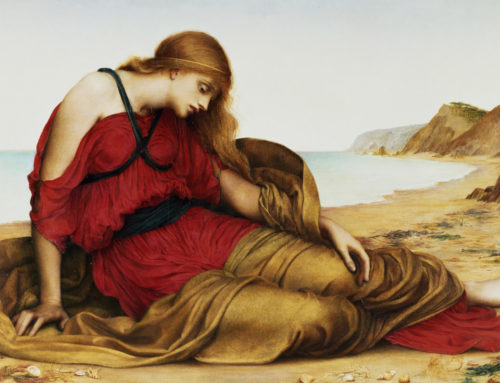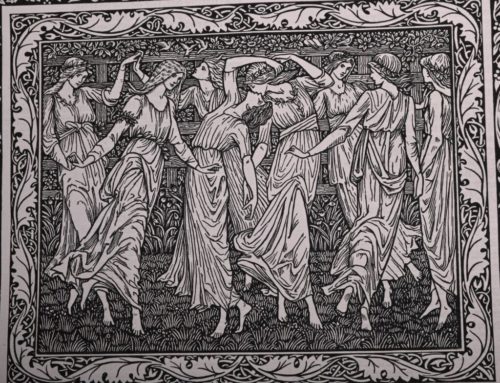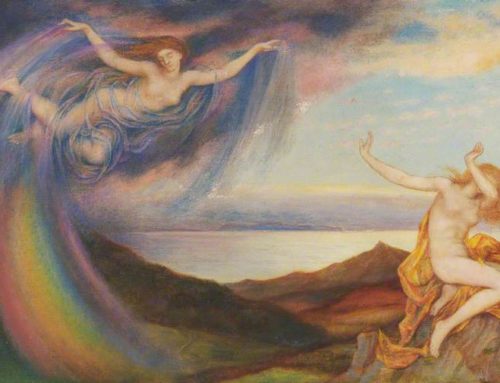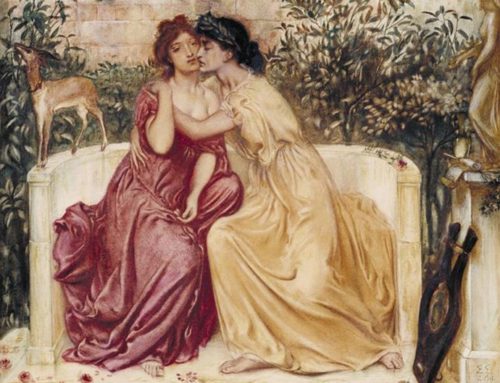As we welcome you back to our museums, volunteer Amy Plewis shows you one of her favourite paintings in the De Morgan Collection on the theme of a welcome.
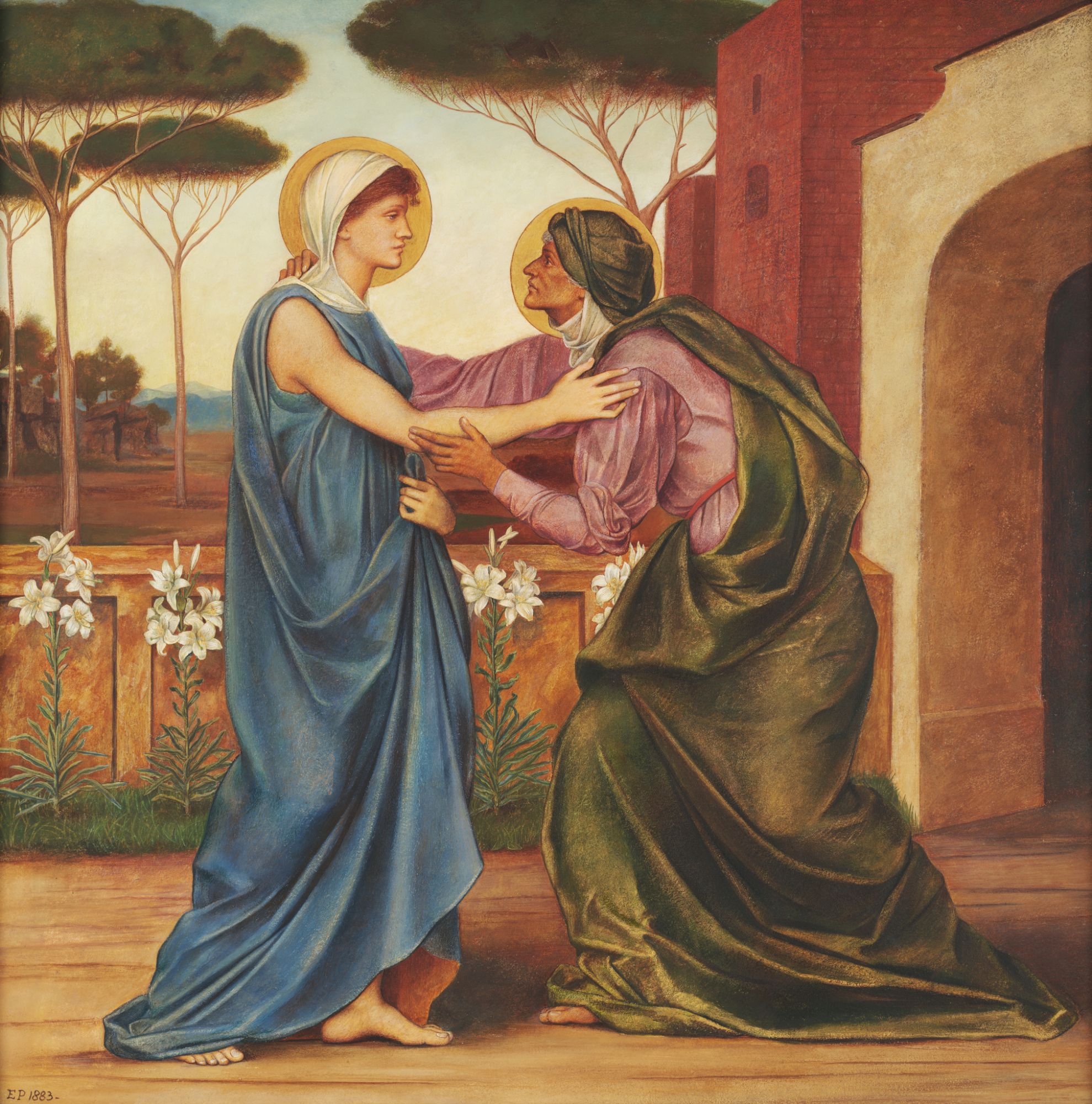
The Salutation (1883), by Evelyn De Morgan, Oil on board, 20 ¼” x 21”
Two women, one youthful and fair, the other older and bronzed, greet one another with mutual affection and respect. The younger woman reaches out to her companion with one hand while gathering her dress to her stomach with the other, at once enabling her to move more freely and drawing attention to her pregnant state. The subdued pink and green fabrics of the elder woman flutter around her body as she steps forward, gently bowing in reverence as she moves to embrace her friend. Their gazes express a reciprocated care and concern; the tenderness of their touch implies a long-established friendship.
The Salutation is an exceptional example of Evelyn De Morgan’s ability to distil the essence of a story to express her personal beliefs. Similarly, she seamlessly fuses an influence of Italian Renaissance art with her individualistic creative style. The Visitation (as illustrations of this scene are more commonly known) is a key event in the lives of the Virgin Mary and her kinswoman Elizabeth, as well as those of their unborn children Jesus Christ and John the Baptist respectively. While De Morgan includes some conventional Christian iconography, for example, the holy women’s golden haloes and the pure white lilies, the more open title indicates a shift in interpretive focus, offering the viewer a nuanced reading of a familiar story.
The Gospel of Luke describes the reunion of Mary and Elizabeth as a physically and mystically portentous one, significant for the two women as well as for future sons. ‘When Elizabeth heard Mary’s greeting, the baby leaped in her womb, and Elizabeth was filled with the Holy Spirit. In a loud voice she exclaimed: “Blessed are you among women, and blessed is the child you will bear!’(Luke 1.41-42 )[1] Evelyn captures the magnitude of this moment through the graceful figures and body language of the expectant mothers. Both have experienced immaculate conceptions, through which their bodies have become vessels for the holiest of men, destined to change the world forever.
Having studied the Italian Renaissance masters, Evelyn’s painting offers clear parallels to well-known images of The Visitation. Fra Angelico’s Cortona Altarpiece (1443-4) and Domenico Ghirlandaio’s Tornabuoni Chapel fresco cycle in Santa Maria Novella (1485-90) give a good idea of the typical composition, colour scheme and gestures used in depictions of the scene.
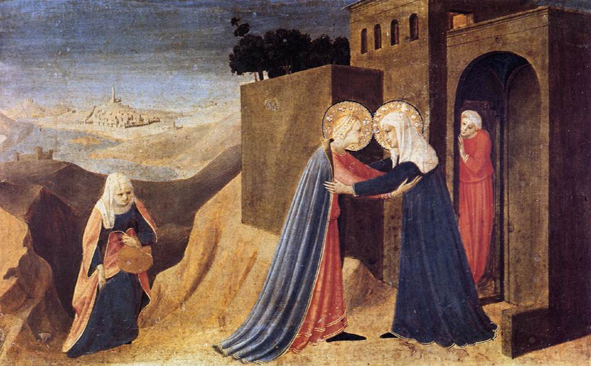
Predella panel of the Cortona Altarpiece (1443-4) by Fra Angelico
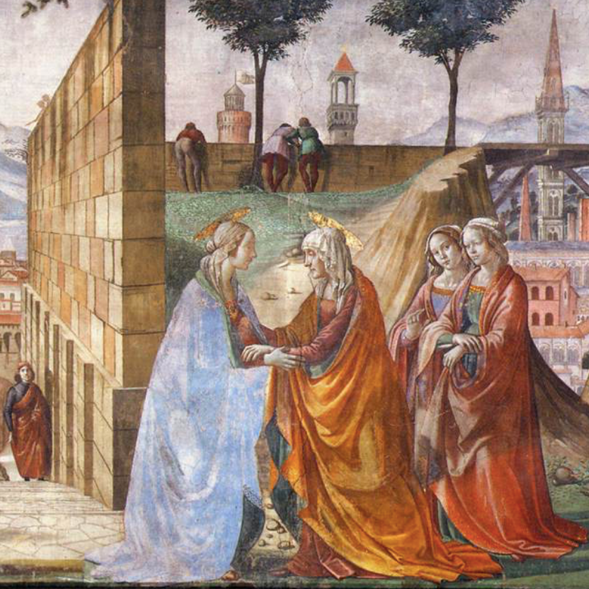
Detail from the frescoes of the Tornabuoni Chapel of Santa Maria Novella in Florence (1485-90) by Domenico Ghirlandaio
A work completed around four years before The Salutation demonstrates a more obvious influence of such painters on De Morgan. Now lost, The Annunciation explicitly references Quattrocento masters in the slightly rigid poses and archetypal gestures of Mary and the Archangel Gabriel. Even from the poor reproduction below, the painting appears to express little of personal style or expression.
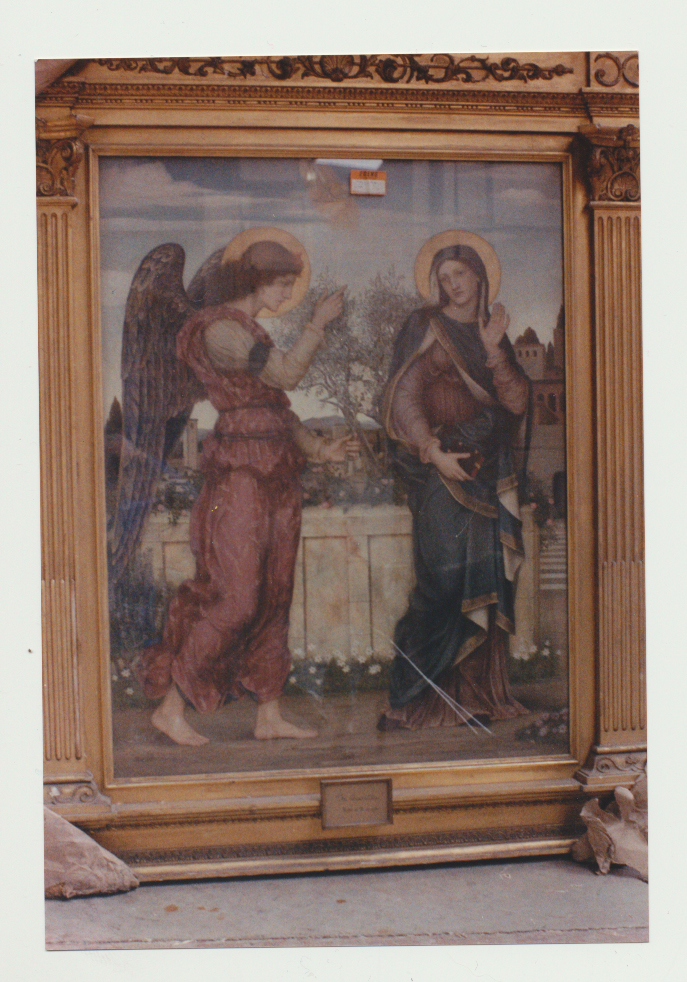
The Annunciation by Evelyn De Morgan
Taking advantage of the fact that we as an onlooker are aware of the biblical and art historical background to The Salutation, Evelyn invites us to revaluate the human element of the event, placing the emphasis on the women themselves rather than the Christian narrative and its connotations. United in an exclusively female experience, Mary and Elizabeth share a bond of camaraderie in their physical condition, deepened by familial love.
[1] https://www.biblegateway.com/passage/?search=Luke%201%3A41-45&version=NIV


